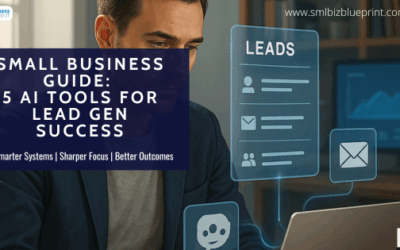The fear of objections. How often has this fear stopped us all from approaching a prospective client or customer? For me numerous times. All the objections run through your head.
They won’t like me, they won’t like the product, they will ask a difficult question.
I think the first hurdle for objections is to not take them personally. The prospect is not having a shot at you. The product or service you are offering just doesn’t suit them at this moment.
You need to stop and breathe and ask yourself questions about:
What is the customer thinking?
How can I provide additional value to them or their business?
How can it make them more successful?
What problem am I solving?
What am I saving the client? What am I adding to the client?
Generally, when we buy something we are looking to solve a problem or add some value to our lives or business.
So it doesn’t matter if you are trying to sell a prospective customer on buying your product, a prospective investor in funding you, or a prospective partner in doing business together, you will encounter and will have to overcome objections.
Importantly, you should plan for these objections beforehand. How? By preparing, thinking and planning for them. Ideally, you should write every objection down and write the answers to these objections. Then review and review and review them until your answers are second nature.
To help you begin to plan for objections here are 5 common objections we all face:
Objection 1: I’m too busy
This makes it hard to even get your foot in the door in the first place. At the advertisement level, people will skim over your ad and never commit to focusing on and reading it. You’ve got to show prospects fast that what you’re offering is worth their time and valuable to them and solves a problem
The solution is to get their attention. Tease them with something, promise something, use memorable messages, and/or give prospects value up front.
Importantly, the better you understand who your customer is and can speak to their specific needs, the better you will do in getting their attention and getting them to spend time considering your offer.
Objection 2: Why do I need you?
Particularly if prospects are not actively seeking the product or service you offer, you must show them why they need it. Show them what life can be like with your solution – how it solves a key need or pain.
Sometimes you even need to put them in pain, if they don’t know or think they are in pain. For example, while your prospects may be happy with their legal firm, a message that stated “learn the 3 ways your lawyer is probably costing you thousands of dollars each year” will make them think they do have a pain/problem and get their attention.
Objection 3: I don’t have the money/the price is too high
This objection comes up earlier than you’d think. It’s partly because people and companies are both more cost-conscious these days, and partly from people’s aversion to spending more money on something at all. So “I don’t have the money” is their excuse to bail before getting too invested in the decision-making process.
The solution here is to show prospects the value of what they are getting. Will your product or service enhance their lives, save them money in the future, position them to be more successful, etc.? Let them know the answer to this question!
Likewise, if the prospect is considering an alternative solution to your company which is less expensive, you need to show why the best decision is to go with you.
Don’t let your prospect compare apples to apples or you will lose the game. Make sure you offer has a lot of value included such as checklists, additional services etc
Objection 4: I’m not sure I believe you
People are sceptical and don’t believe everything you advertise or say. They want to know you’re for real and they want to see proof that your product or service does what you say.
Show them you’re legitimate by letting them know your credentials, seeing your work, knowing your clientele or how long you’ve been in business, and also that you’re honest, have integrity, and really care.
One of the best ways to prove you can get results is showing testimonials from other customers. This is why “before and after” pictures are used in most weight loss commercials. This can be done with many products.
Other things you can do to overcome scepticism include offering money back guarantees and simple return policies.
Objection 5: Let me think about it/I need to speak with my partner/manager/etc.
Sometimes prospects legitimately need to think about a decision. Or they need to discuss it with someone else. With regards to the latter, ask questions from the beginning to determine if there’s another decision-maker. And if so, bring that other decision-maker into the conversation earlier so you can “sell” both decision-makers at once (rather than having to do it twice).
With regards to the prospect requiring time to consider the decision, make sure to follow-up with them while they’re making that decision. That doesn’t mean calling or emailing every hour. But rather periodically checking in on them.
Importantly, find reasons to check in. For example, maybe you read about something in the news that you think they’d find interesting. If so, call or email them with the piece of news. When you do, there’s no need to even bring up the sale you want to close. Rather, focus on helping them and staying in touch, and each time you do, you’ll move closer to securing the sale.
Getting new customers is one of the hardest things a business must do.
By considering the objections prospective customer has, and preparing for them (via adjusting your marketing materials and training your sales team), you will more successfully attract new customers. This can and will give you a competitive advantage, and allow you to grow a successful company.
Photo by Isaiah Rustad on Unsplash





